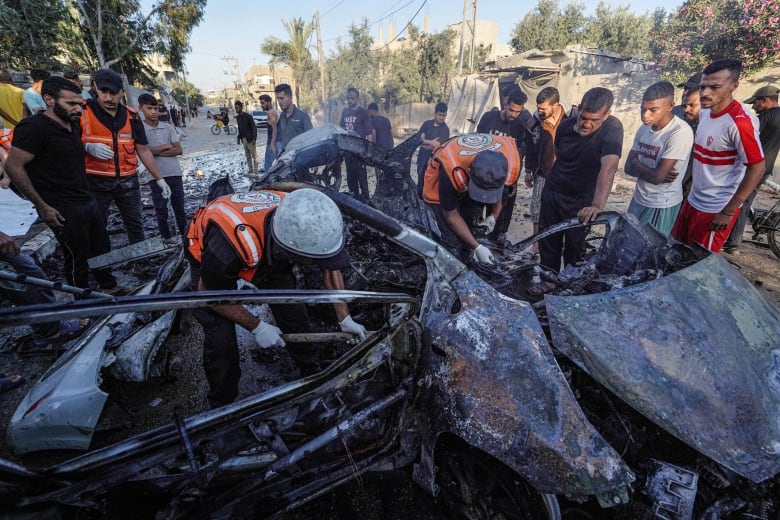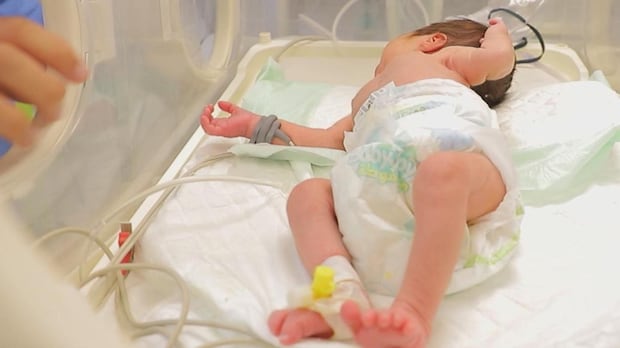Israeli forces have ended combat operations in the Jabalia area of north Gaza after destroying more than 10 kilometres of tunnels during days of intense fighting that included over 200 airstrikes, the military said on Friday.
At the south end of Gaza, Israeli forces pressing an offensive into Rafah found rocket launchers and other weapons as well as tunnel shafts built by Hamas in the city centre, the army said. Tank-led Israeli troops aim to break up Hamas’s fighting formations in the city on the border with Egypt.
In an update on more than two weeks of intense fighting in Jabalia, the Israeli military said troops had completed their operation and withdrawn to prepare for other operations in Gaza.
During the operation, troops recovered the bodies of seven of the hostages, the military said, without elaborating on their identities. Hamas-led militants abducted abducted some 250 people when they stormed over the border into Israel on Oct. 7 last year and killed around 1,200 people, according to Israeli government tallies. About 120 people remain unaccounted for.
Over 36,000 Palestinians have been killed in Israel’s air and land war since Oct. 7 in Gaza, its Hamas-run health ministry says, and much of the densely populated enclave lies in ruins.
Jabalia has seen heavy fighting
In Jabalia, a densely packed urban district populated by refugees from the 1948 war of Israel’s founding and their descendants, Hamas turned the “civilian area into a fortified combat compound,” the military statement said.
It said Israeli troops killed hundreds of militants in close-quarter combat and seized large caches of weaponry and destroyed rocket launchers primed for use.
LISTEN | Kenneth Roth, human rights expert, on Israel’s investigations:
Front Burner26:49When Israel investigates itself, what happens?
Underground, Israeli forces disabled a weapons-filled tunnel network extending over 10 kilometres and killed Hamas’s district battalion commander, it said.
Israel has blamed what it calls Hamas’s deliberate embedding of fighters in residential areas for the high civilian toll in the war. Hamas has denied using civilians as cover for fighters.
Jabalia has been battered by intense combat for weeks, underscoring Israel’s difficulty in destroying Hamas units.
There were weeks of heavy fighting in Jabalia in the early stages of the Israeli campaign, and in January the military said it had killed all the Hamas commanders and eliminated the combat formations of Gaza’s ruling group in the area.
Israeli Prime Minister Benjamin Netanyahu’s vow to eradicate Hamas as a fighting and political force has run up against the Islamist group’s deep roots in Gaza’s social fabric.
12 killed in central Gaza
Israeli tanks rumbled into the centre of Rafah on Tuesday as part of a series of probing operations around the area that has become one of the main focal points of the war in Gaza, now in its eighth month.
The army said it had come across longer-range rockets as well as stocks of rocket-propelled grenades, explosives and ammunition as it continued “intelligence-based operational activities” in Rafah, which skirts Gaza’s border with Egypt.

Hamas fighters demonstrated their continuing strength in Rafah last week, launching missiles at Israel’s commercial hub Tel Aviv for the first time in months on Sunday.
At least a dozen people were killed, including children, in two airstrikes Friday in central Gaza, according to hospital officials and The Associated Press journalists who counted the bodies. The strikes hit Nuseirat and Bureij, and two children and four women were among those killed and the bodies were brought to the Al Aqsa Hospital in Deir al-Balah.
Islamic Jihad, Hamas’s smaller militant ally, said on Friday it fired a barrage of mortar bombs at a gathering of Israeli soldiers and vehicles penetrating the vicinity of Salah al-Din Gate on Rafah’s southern fringes. It gave no more details.
Rafah, the only major city in Gaza yet to have been taken by Israeli forces, had been a refuge for more than one million Palestinians driven from their homes by fighting in other areas of the small coastal enclave, but most have now left after being told to evacuate ahead of the Israeli operation.
Hundreds of thousands are now living in tents and other temporary shelters in a special evacuation zone in nearby Al-Mawasi, a sandy, palm tree-dotted district on the coast, as well as areas in central Gaza.
WATCH l Military campaign in Rafah leads to life-threatening decisions:
Dr. Hatem Dhair, who oversees a neonatal unit in Khan Younis, says his hospital is now treating babies who were transferred there from Rafah — a challenging journey in the deteriorating conditions of southern Gaza.
Israel has signalled for weeks that it intended to mount an assault on the remaining Hamas battalions in Rafah, drawing international condemnation and warnings even from allies like the United States not to attack the city while it remained full of displaced people.
The risks were underlined on Sunday when an Israeli airstrike targeting two Hamas commanders outside the city set off a blaze that killed at least 45 people sheltering in tents next to the compound hit by the jets.
As the war has dragged on and Gaza’s infrastructure has been widely demolished, malnutrition has spread among the 2.3 million population as aid deliveries have slowed to a trickle, and the United Nations has warned of incipient famine.


